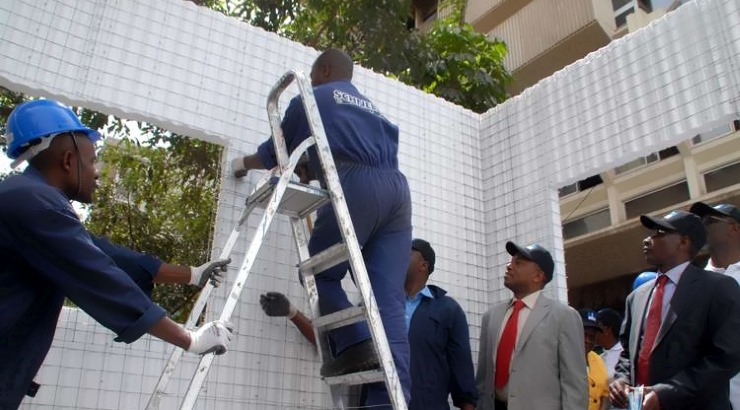Innovation
How NHC Plans to Lift EPS Tech Adoption Among Builders
The use of EPS panels cuts building costs by up to 30%.

The National Housing Corporation is set to embark on a campaign to promote the use of expanded polystyrene (EPS) building technology as it seeks new markets for its products.
The company, which opened an EPS factory in Mlolongo in 2012, has identified Eldoret as a launch pad for its western Kenya campaigns with plans to build a high-rise in the area.
NHC has sought approval to use the EPS technology in the construction of a 14-storey residential building near Eldoret town comprising 180 one-bedroom units and two studios.
The apartment will be built on 6.64 acres at the NHC Kapsuswa Rental Housing Scheme – about 3km from the Eldoret Central Business District.
NHC said that the 500 million project, which targets low-income families, will help spread technical skills on the use of EPS technology beyond Nairobi where a sizeable number of developers are already using EPS panels.
The company is particularly keen on enlightening upcountry builders on the availability and benefits of EPS walls, staircases, and floor panels.
“The use of EPS panels as a substitute to traditional materials used in erecting walls, staircases, floors and roofs is expected to reduce construction periods as well as direct and indirect building costs,” NHC said.
How EPS panels work
EPS panels for construction are made of a light cellular plastic, a by-product of oil refining, which comprises tiny circular particles containing nearly 100 per cent air.
To make the panels, polystyrene foam is inserted between two slabs of steel wire mesh. Once fused, they are spewed with cement to support and reinforce the walls.
The air bubbles trapped in the foam mean EPS houses offer better control of climatic conditions compared to houses made of concrete or wood.
Since air is a poor conductor of heat, the building remains cool when it is hot outside and warm when external temperatures are low.
RELATED: NHC to Spend Sh1bn Building 2,000 Prefab Homes
According to the NHC, the use of EPS panels cuts down the construction period by half while slashing direct and indirect building costs by 30 per cent.
In December 2014, the company said there was a shortage of contractors with the skills to undertake housing projects using the EPS technology hence the need to train artisans on the application of the technology.
“NHC is about to roll out major housing developments using EPS technology and therefore we plan to build adequate capacity by the end of this year,” then acting MD Henry Maina said.
The company later disclosed its ambitious plan to build 500,000 houses countrywide within three years in a bid to bridge the country’s housing demand-supply gap, which was then estimated at 200,000 units annually. The NHC houses will be built using EPS technology.














